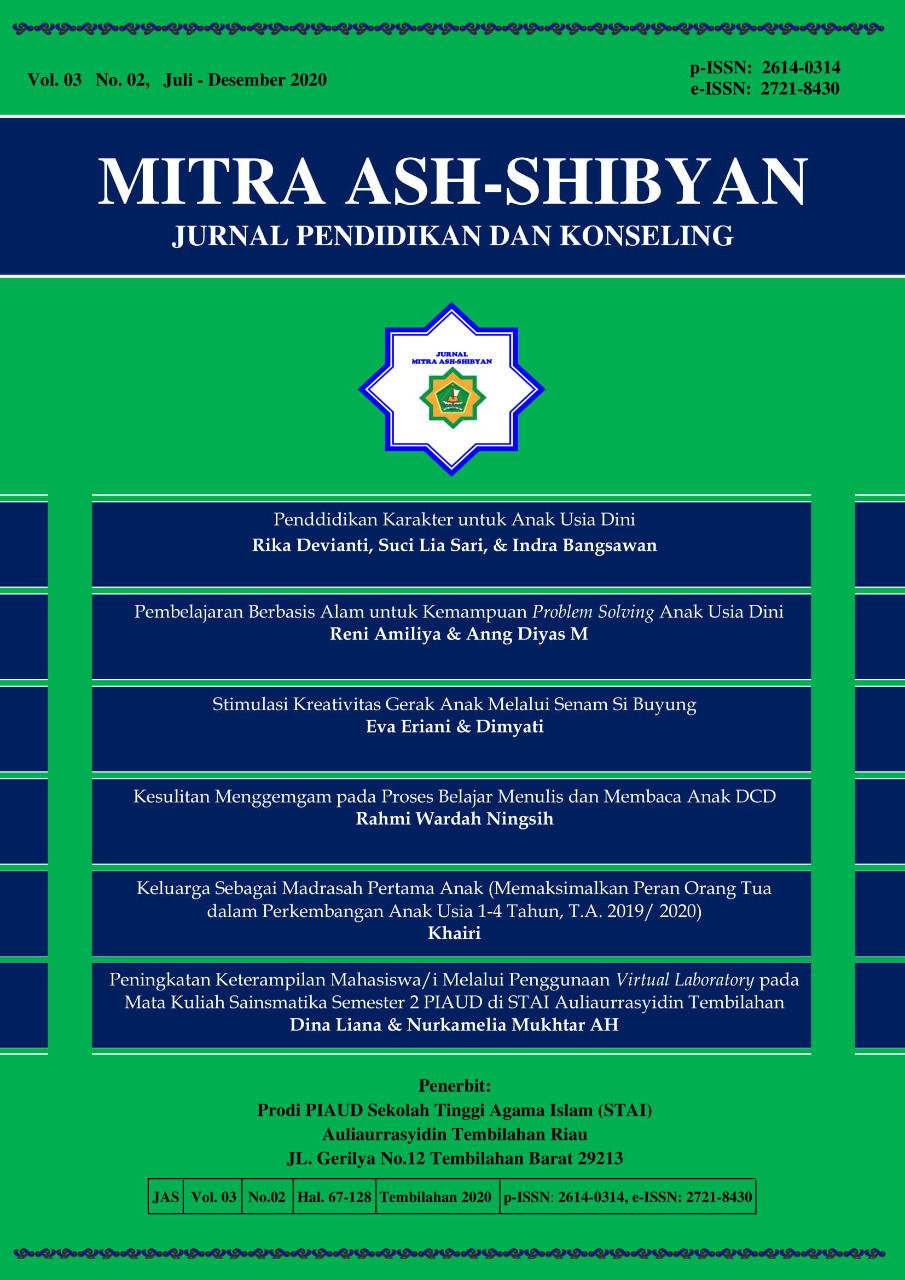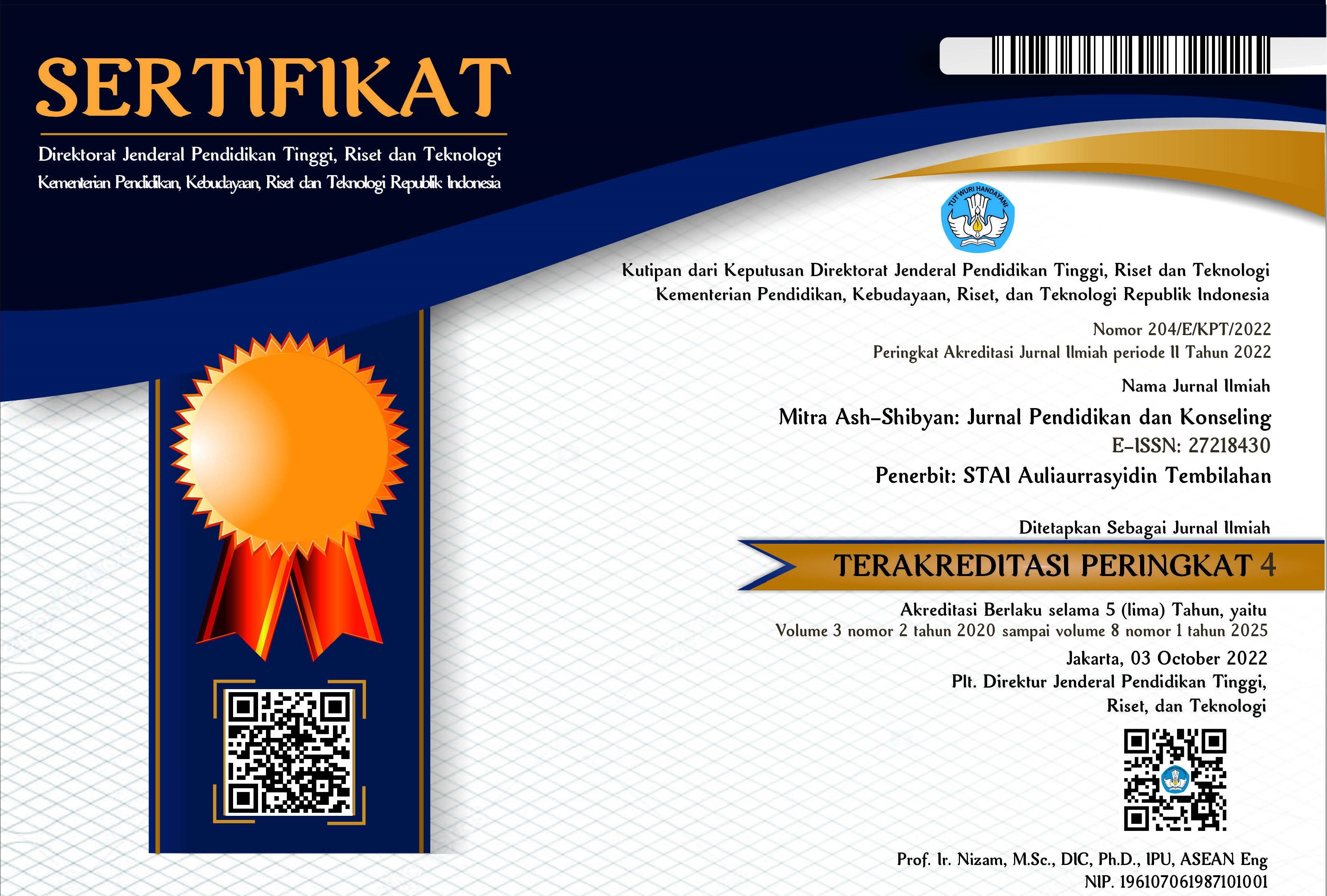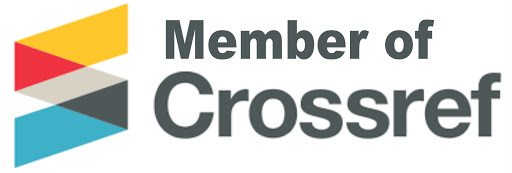Pembelajaran Berbasis Alam untuk Kemampuan Problem Solving Anak Usia Dini
DOI:
https://doi.org/10.46963/mash.v3i02.158Keywords:
Nature-based learning, Problem solving ability, Early childhoodAbstract
Problems always exist throughout human life, including early childhood. Early childhood are required to be able to solve each of their own problem properly. Currently there are still children who have not been able to solve the problems they face without the help of teachers or other adults. To overcome this problem, researchers proposes nature-based learning to develop children's problem solving abilities. This learning offers children as active learners who are free to play and explore so that they will gain their own experience and knowledge directly. The experience and knowledge gained is used by children to overcome the problems they encounter. The effectiveness of nature-based learning was evaluated by designing learning activities carried out by the quasi-experimental method for 36 children. Two variables: nature-based learning and problem solving abilities. The results showed that there was a significant increase in the problem solving ability of early childhood by 86.11%.
Downloads
References
Asah, S. T., Bengston, D. N., & Westphal, L. M. (2012). The Influence of Childhood: Operational Pathways to Adulthood Participation in Nature-Based Activities. Environment and Behavior, 44(4), 545–569. https://doi.org/10.1177/0013916510397757
Branca, N. A. (1980). Problem solving as a goal, process and basic skills. In S Krulik and R.E. reys (eds). Problem solving in school mathematics. Washinting DC: NCTM.
Bento, G., & Dias, G. (2017). The importance of outdoor play for young children’s healthy development. Porto Biomedical Journal, 2(5), 157–160. https://doi.org/10.1016/j.pbj.2017.03.003
Brown, L. J. (1988). Helping children learn to solve problems. DAY CARE AND EARLY EDUCATION, 26–30.
Carter, D. (2016). A Nature-Based Social-Emotional Approach to Supporting Young Children’s Holistic Development in Classrooms With and Without Walls: The Social-Emotional and Environmental Education Development (SEED) Framework. The International Journal of Early Childhood Environmental Education International Journal of Early Childhood Environmental Education, 4(1), 9–24.
Collado, S., Corraliza, J. A., Staats, H., & Ruíz, M. (2015). Effect of frequency and mode of contact with nature on children’s self-reported ecological behaviors. Journal of Environmental Psychology, 41, 65–73. https://doi.org/10.1016/j.jenvp.2014.11.001
Cooper, A. (2015). Nature and the Outdoor Learning Environment: The Forgotten Resource in Early Childhood Education. International Journal of Early Childhood Environmental Education, 3(31), 85–97.
Csapó, B., & Funke, J. (2017). The nature of problem solving: using research to inspire 21st century learning (eds.). Paris: OECD Publishing.https://doi.org/10.1787/9789264273955-en
Dahar, W. R. (1989). Teori-teori belajar. Jakarta: Erlangga
Ernst, Julia. (2014). Early childhood educator’ preferences and perception regarding outdoors setting as learning environments. International Journal of Early Childhood Education, 2 (1). 97-122
Garton, A. F. (2008). Exploring cognitive development: The child as problem solver. USA: Blackwell Publishing Ltd. https://doi.org/10.1002/9780470773574
Horizons, B. (2018). Teaching children to problem solve. Retrieved December 20, 2018, from https://www.brighthorizons.com/family-resources/prepare-yourchild-for-school/teaching-children-to-problem-solve
Jonassen, D. H. (2011). Learning to solve problems. New York: Routledge.
Kunchamboo, V., Lee, C. K. C., & Brace-Govan, J. (2017). Nature as extended-self: Sacred nature relationship and implications for responsible consumption behavior. Journal of Business Research, 74, 126–132. https://doi.org/10.1016/j.jbusres.2016.10.023
Lohr, V. I., & Pearson-Mims, C. H. (2005). Children’s active and passive interactions with plants influence their attitudes and actions toward trees and gardening as adults. HortTechnology, 15(3), 472–476
Mannasis, K. (2012). Problem solving in child and adolescent psychotherapy : a skills-based, collaborative approach. New York: The Guilford Press.
Meliala, A. (2004). Anak ajaib, temukan dan kembangkan keajaiban anak anda melalui kecerdasan majemuk. Yogyakarta: ANDI
Otto, S., & Pensini, P. (2017). Nature-based environmental education of children: Environmental knowledge and connectedness to nature, together, are related to ecological behaviour. Global Environmental Change, 47(September), 88–94. https://doi.org/10.1016/j.gloenvcha.2017.09.009
Sari, Y. R., Jaya, M. T. B. ., & Anggraini, G. F. (2018). Penggunaan media puzzle terhadap peningkatan kemampuan pemecahan masalah anak usia 5-6 tahun. Universitas Lampung
Shadiq, F. (2009). Kemahiran matematika. Yogyakarta: PPPPTK Matematika
Syaodih, E., Setiasih, O., Romadona, N. F., & Handayani, H. (2018). Pengembangan kemampuan pemecahan anak usia dini dalam pembelajaran proyek di Taman Kanak-kanak. Jurnal Pendidikan Usia Dini, 12(1), 29–36. https://doi.org/10.21009/JPUD.121 03
Taylor, A. F., Kuo, F. E., Spencer, C., & Blades, M. (2006). Is contact with nature important for healthy child development? State of the evidence. Children and Their Environments: Learning, Using and Designing Spaces, 124–139.
Utami, I. S., L. O., & Sarumpaet, N. (2017). Penerapan metode problem solving dalam mengembangkan kemampuan kognitif anak usia dini melalui kegiatan bermain. Tunas Siliwangi, 3(2), 175–180
Wei, C.-W., Chen, H.-H., & Chen, N.-S. (2015). Effects of Embodiment-Based Learning on Perceived Cooperation Process and Social Flow. Procedia - Social and Behavioral Sciences, 197(February), 608–613. https://doi.org/10.1016/j.sbspro.2015.07.201
Wells, N. M., & Lekies, K. S. (2016). Nature and the life course : pathways from childhood nature experiences. Children, Youth and Environments, 16(1)
Whittaker, J. V. (2014). Good thinking! Fostering young children’s reasoning and problem solving. Young Children, 80–89. Retrieved from https://www.researchgate.net/publication/263450557
Downloads
Published
Issue
Section
License
Authors who publish with this journal agree to the following terms:
1. Copyright on any article is retained by the author(s).
2. The author grants the journal, right of first publication with the work simultaneously licensed under a Creative Commons Attribution shareAlike 4.0 International License that allows others to share the work with an acknowledgment of the work’s authorship and initial publication in this journal.
3. Authors are able to enter into separate, additional contractual arrangements for the non-exclusive distribution of the journal’s published version of the work (e.g., post it to an institutional repository or publish it in a book), with an acknowledgment of its initial publication in this journal.
4. Authors are permitted and encouraged to post their work online (e.g., in institutional repositories or on their website) prior to and during the submission process, as it can lead to productive exchanges, as well as earlier and greater citation of published work.
5. The article and any associated published material is distributed under the Creative Commons Attribution-ShareAlike 4.0 International License







2.png)



